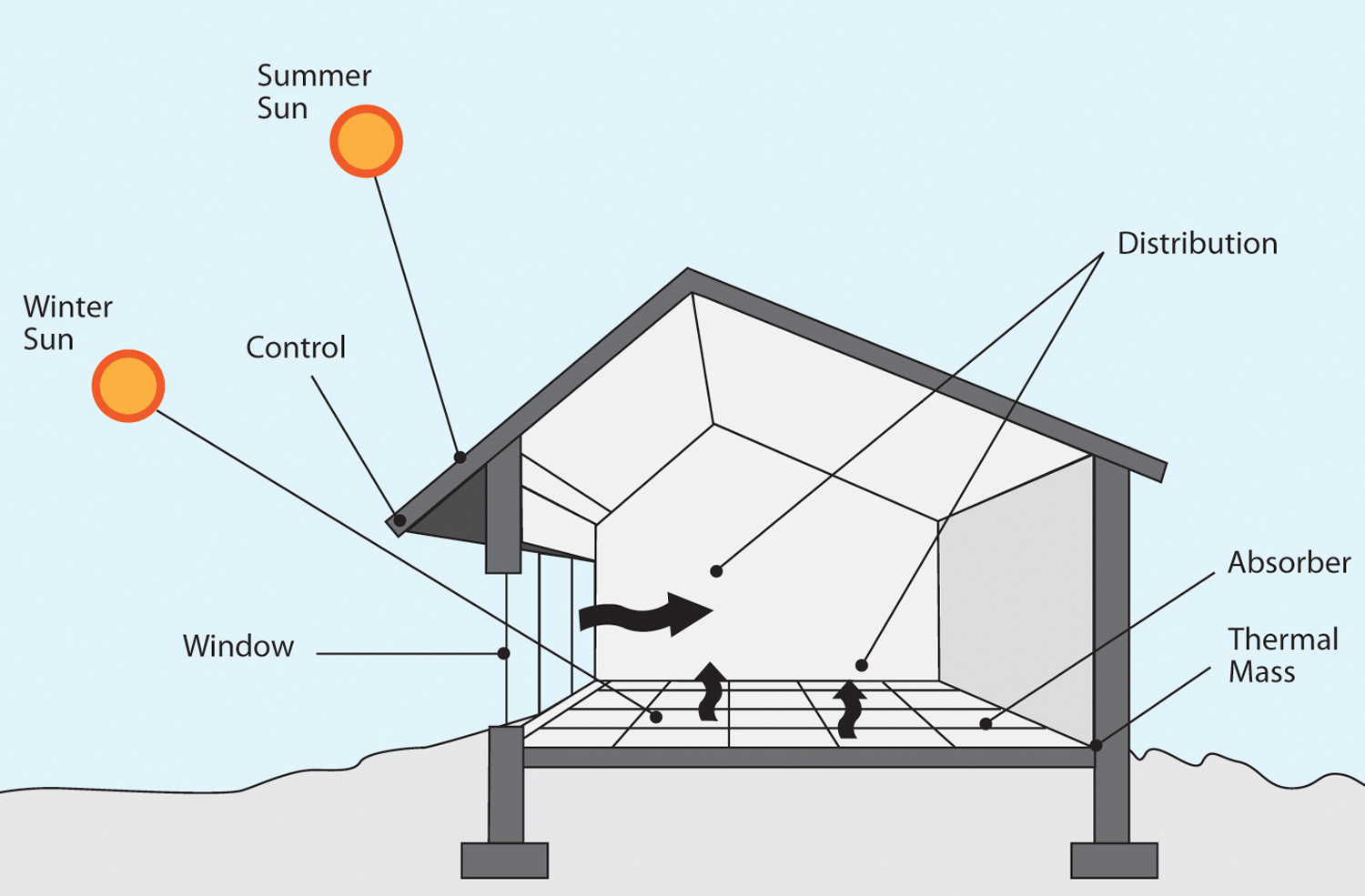Passive solar design uses the natural energy from the sun for heating and cooling living spaces. Key aspects of passive solar include properly oriented windows, thermal mass, distribution mechanisms, and control strategies. Windows are used to collect solar energy and should face southwards for maximum solar input during the winter months and minimum input during the summer months.
Thermal mass (concrete, brick, stone, tile, and even water) in passive solar homes allow for heat to be absorbed from sunlight during the winter months and for heat absorption during the summer months.
Solar energy is distributed throughout the home by use of conduction, convection, and radiation. An example of conduction would be the sun-heated floor warming your feet. Convection occurs when air is moved from warmer areas of the house to cooler ones and radiation is warmth a person feels from a sunny window.
Controlling these different variables include the use of roof overhangs for extra shade in the summer, operable vents to allow or restrict heat flow, insulating shutters, and thermostats that operate fans for extra temperature control. Passive solar remains a viable option for those looking to significantly reduce their energy costs while maintaining optimal comfort. Passive solar requires low maintenance, low initial costs, and a short-term payback period.

References
